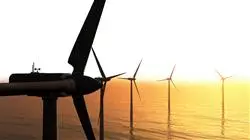University certificate
The world's largest faculty of engineering”
Introduction to the Program
Enroll in this Professional master’s degree and improve your knowledge on Environmental Management"

Environmental pollution is one of the main problems currently existing on the planet. In all countries, the poor quality of air, water and waste affecting the soil is generating not only problems with the natural environment, but also causing the proliferation of diseases or side effects that significantly aggravate people's health. Engineering provides, from its technical knowledge, great solutions to reduce and even eliminate these consequences.
However, in this scenario, Environmental Management is essential from the very conception of the project, where the landscape itself, land management, as well as an adequate planning in all processes, must be taken into account. This knowledge has been advancing in recent years, thanks to a great extent to new technologies and to the professionals of the sector themselves. In view of this reality, there is an unquestionable need for increasingly qualified engineers with a global and technical vision. For all these reasons, TECH Global University has created this Professional master’s degree with the main objective of providing the graduate with the most comprehensive and current knowledge in this field.
In this way, the professional has a program with a theoretical and practical approach that will allow them to delve into the proper organization and management of projects, the processes of assessment and environmental impact, the tools most commonly used to perform an audit and waste management. All this in a much more visual and dynamic way thanks to the video summaries, videos in detail or specialized readings that are part of the resource library of this program.
In addition, this academic institution uses the Relearning system, which allows students to progress through the syllabus in a more natural way, reducing even the long hours of study so frequent in other methodologies.
The engineer is has an excellent opportunity to advance in their professional career through a 100% online university qualification, flexible and adaptable to the needs of the students. In order to study this Professional master’s degree, all that is needed is an electronic device with an Internet connection to access the syllabus on the Virtual Campus at any time of the day. In addition, the graduate has the freedom to distribute the teaching load according to their needs, making this university education easily compatible with the most demanding responsibilities.
Enroll in a university program in which you will be able to delve into the treatment of contaminants and control strategies"
This Professional master’s degree in Environmental Management contains the most complete and up-to-date scientific program on the market. The most important features include:
- The development of case studies presented by experts in Environmental Management
- The graphic, schematic, and practical contents with which they are created, provide scientific and practical information on the disciplines that are essential for professional practice
- Practical exercises where self-assessment can be used to improve learning
- Its special emphasis on innovative methodologies
- Theoretical lessons, questions to the expert, debate forums on controversial topics, and individual reflection assignments
- Content that is accessible from any fixed or portable device with an Internet connection
Acquire the most comprehensive knowledge on Environmental Management and progress in your professional career as an engineer"
The program’s teaching staff includes professionals from the sector who contribute their work experience to this educational program, as well as renowned specialists from leading societies and prestigious universities.
The multimedia content, developed with the latest educational technology, will provide the professional with situated and contextual learning, i.e., a simulated environment that will provide immersive education programmed to learn in real situations.
This program is designed around Problem-Based Learning, whereby the professional must try to solve the different professional practice situations that arise during the academic year For this purpose, the students will be assisted by an innovative interactive video system created by renowned and experienced experts.
TECH will boost you in your sector through this Professional master’s degree in Environmental Management"

If you have an engineering project in mind, this diploma will allow you to maintain quality at all levels"
Why study at TECH?
TECH is the world’s largest online university. With an impressive catalog of more than 14,000 university programs available in 11 languages, it is positioned as a leader in employability, with a 99% job placement rate. In addition, it relies on an enormous faculty of more than 6,000 professors of the highest international renown.

Study at the world's largest online university and guarantee your professional success. The future starts at TECH”
The world’s best online university according to FORBES
The prestigious Forbes magazine, specialized in business and finance, has highlighted TECH as “the world's best online university” This is what they have recently stated in an article in their digital edition in which they echo the success story of this institution, “thanks to the academic offer it provides, the selection of its teaching staff, and an innovative learning method aimed at educating the professionals of the future”
A revolutionary study method, a cutting-edge faculty and a practical focus: the key to TECH's success.
The most complete study plans on the university scene
TECH offers the most complete study plans on the university scene, with syllabuses that cover fundamental concepts and, at the same time, the main scientific advances in their specific scientific areas. In addition, these programs are continuously being updated to guarantee students the academic vanguard and the most in-demand professional skills. In this way, the university's qualifications provide its graduates with a significant advantage to propel their careers to success.
TECH offers the most comprehensive and intensive study plans on the current university scene.
A world-class teaching staff
TECH's teaching staff is made up of more than 6,000 professors with the highest international recognition. Professors, researchers and top executives of multinational companies, including Isaiah Covington, performance coach of the Boston Celtics; Magda Romanska, principal investigator at Harvard MetaLAB; Ignacio Wistumba, chairman of the department of translational molecular pathology at MD Anderson Cancer Center; and D.W. Pine, creative director of TIME magazine, among others.
Internationally renowned experts, specialized in different branches of Health, Technology, Communication and Business, form part of the TECH faculty.
A unique learning method
TECH is the first university to use Relearning in all its programs. It is the best online learning methodology, accredited with international teaching quality certifications, provided by prestigious educational agencies. In addition, this disruptive educational model is complemented with the “Case Method”, thereby setting up a unique online teaching strategy. Innovative teaching resources are also implemented, including detailed videos, infographics and interactive summaries.
TECH combines Relearning and the Case Method in all its university programs to guarantee excellent theoretical and practical learning, studying whenever and wherever you want.
The world's largest online university
TECH is the world’s largest online university. We are the largest educational institution, with the best and widest online educational catalog, one hundred percent online and covering the vast majority of areas of knowledge. We offer a large selection of our own degrees and accredited online undergraduate and postgraduate degrees. In total, more than 14,000 university degrees, in eleven different languages, make us the largest educational largest in the world.
TECH has the world's most extensive catalog of academic and official programs, available in more than 11 languages.
Google Premier Partner
The American technology giant has awarded TECH the Google Google Premier Partner badge. This award, which is only available to 3% of the world's companies, highlights the efficient, flexible and tailored experience that this university provides to students. The recognition as a Google Premier Partner not only accredits the maximum rigor, performance and investment in TECH's digital infrastructures, but also places this university as one of the world's leading technology companies.
Google has positioned TECH in the top 3% of the world's most important technology companies by awarding it its Google Premier Partner badge.
The official online university of the NBA
TECH is the official online university of the NBA. Thanks to our agreement with the biggest league in basketball, we offer our students exclusive university programs, as well as a wide variety of educational resources focused on the business of the league and other areas of the sports industry. Each program is made up of a uniquely designed syllabus and features exceptional guest hosts: professionals with a distinguished sports background who will offer their expertise on the most relevant topics.
TECH has been selected by the NBA, the world's top basketball league, as its official online university.
The top-rated university by its students
Students have positioned TECH as the world's top-rated university on the main review websites, with a highest rating of 4.9 out of 5, obtained from more than 1,000 reviews. These results consolidate TECH as the benchmark university institution at an international level, reflecting the excellence and positive impact of its educational model.” reflecting the excellence and positive impact of its educational model.”
TECH is the world’s top-rated university by its students.
Leaders in employability
TECH has managed to become the leading university in employability. 99% of its students obtain jobs in the academic field they have studied, within one year of completing any of the university's programs. A similar number achieve immediate career enhancement. All this thanks to a study methodology that bases its effectiveness on the acquisition of practical skills, which are absolutely necessary for professional development.
99% of TECH graduates find a job within a year of completing their studies.
Professional Master's Degree in Environmental Management
Environmental pollution is one of the main problems worldwide, affecting the quality of air, water and soil, which negatively impacts the planet and people's health. Engineering offers technical solutions to reduce and eliminate these consequences. Therefore, it is necessary to have great competences in the consideration of the landscape, land management and proper planning, in order to develop large environmental management projects. For this reason, the Professional Master's Degree in Environmental Management is born, which offers a comprehensive learning in this field, deepening in the organization of projects, environmental impact assessment, audits and waste management. All this, through a 100% online mode that will favor a teaching adapted to your personal needs.
Increase your knowledge and skills anytime, anywhere
The Professional Master's Degree in Environmental Management is based on a Relearning methodology, which facilitates natural learning and reduces the long hours of study. The syllabus includes video summaries, videos in detail and specialized readings. With just an electronic device with an Internet connection, you can access the Virtual Campus and distribute the course load according to your own needs. This program is, therefore, an excellent opportunity to develop your career as an environmental engineer enjoying unparalleled study facilities.







